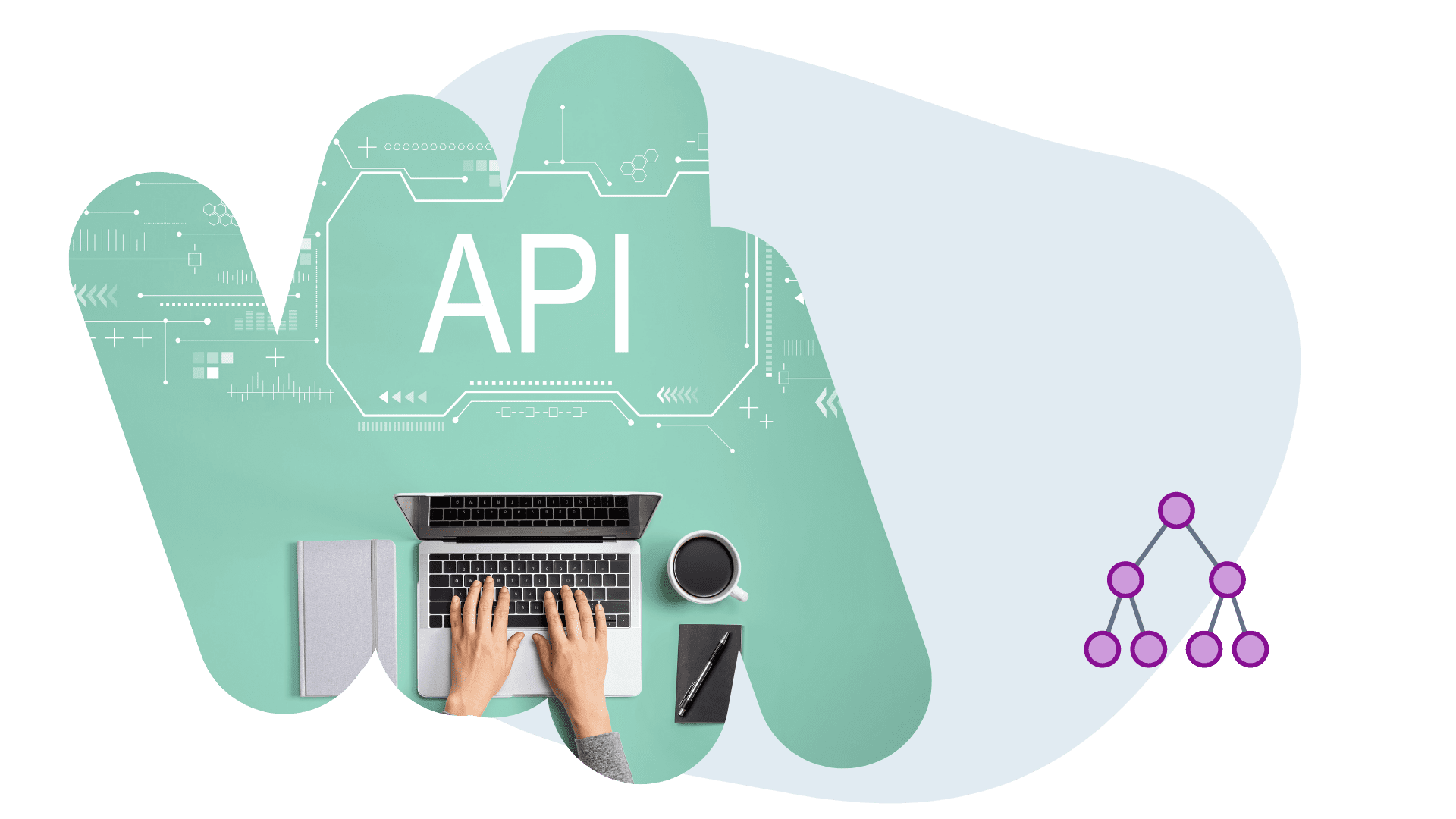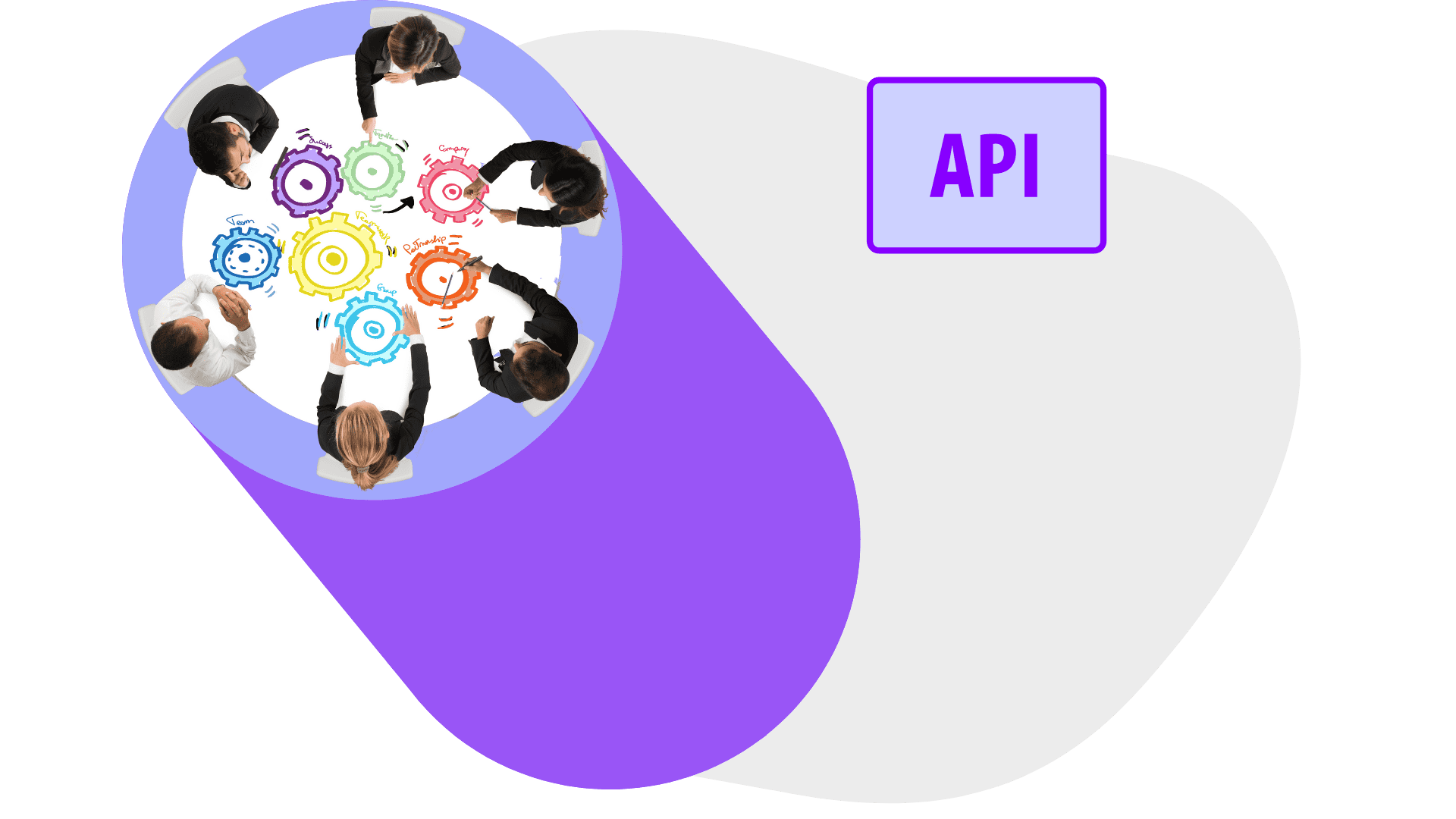


Master the Integrations API and unlock its full potential. Dive deep into how it works with our comprehensive guide.

Key takeaways:
An Integrations API is a set of programming protocols and tools used to facilitate communication and interaction between different software applications. It provides a way for these applications to work together, sharing data and functionality, and thus enabling a more seamless and efficient digital experience.
Ever wondered how your favorite saas applications communicate? Welcome to the fascinating world of API integrations, a crucial part of the tech stack! APIs, or Application Programming Interfaces, are the unsung heroes in the digital world. They work behind the scenes, enabling developers to make different software systems and tools communicate and share data seamlessly.
API integration management platforms, often considered part of a developer's essential tech stack, act like a universal translator for developers, bridging gaps between diverse applications using tools and connectors. From single API documentation to complex code automation platforms, they simplify data transfer and streamline operations, much like the role of development tools in a software engineer's toolkit. Think of them as super-efficient postmen delivering packages (data) from one app (interface) to another!
The significance of an efficient API integration platform for developers can't be overstated. It's akin to possessing a secret weapon that aids in connecting any SaaS applications, anytime, anywhere through interface connectors. So whether you're a seasoned developer or just dipping your toes into the tech waters, understanding API integration tools is a must-have skill in today's interconnected digital landscape.

APIs, or Application Programming Interfaces, play a crucial role in the automation of business processes. Acting as the unsung heroes of your favorite integration platform, these tech marvels work behind-the-scenes with various tools to keep everything running smooth and steady. Developers rely on these APIs and integration management platforms to ensure seamless operation.
Consider this scenario. You're running an enterprise that relies on several different software applications within your tech stack. Each application holds vital data that needs to be shared with other applications for your business to operate effectively. Now, envision having to manually transfer this data from one application to another - sounds like a nightmare, right? This is where API integration tools and API integration management platforms come into play.
That's where APIs and integration platforms come into play. They act as messengers, zipping back and forth between applications, delivering important information exactly where it's needed. This automation, facilitated by integration management platforms and tools, not only saves developers time but also reduces the risk of human error.
API integrations, a crucial part of any tech stack, can significantly impact efficiency and productivity by enabling seamless data sharing between different software platforms. Developers utilize these tools to create interfaces that allow for this seamless integration. Here's how.
All these benefits, experienced by developers through the use of an API integration platform, contribute towards creating a more streamlined workflow. This ultimately leads to increased productivity in API integration management with just a button.
But the magic of APIs doesn't stop at automating tasks and improving efficiency for developers; they also contribute significantly towards innovation by enabling new functionalities. Developers can use Javascript to code these APIs, enhancing their use and effectiveness.
For instance:
This kind of innovation wouldn't be possible without developers integrating API code, even a button or a joke wouldn't function.
Web-based APIs, or Application Programming Interfaces, are the backbone of online interactions including how you get a joke from a code button. Think of them as a set of rules that allow different software applications to communicate with each other. They define the kinds of calls or requests made over the internet, how they're made, and the data formats used, even when you press a button to get a joke through code.
For instance, when you get to use an app like Facebook on your phone, it's using a web API code to send and receive data from Facebook's servers. So every time you post a status update or press the like button, or even share a joke, it's all thanks to web services facilitated by these APIs.
Now let's delve into RESTful APIs and get to the code. Representational State Transfer (REST) is an architectural style for creating web services. Unlike traditional web services which are server-driven, REST is client-driven. This means that the client has full control over its interactions with resources, like clicking a button or decoding a joke.
REST APIs, often the code behind web services, operate over HTTP using methods such as GET, POST, and DELETE. It's stateless because each request from any client contains all the information needed to service that request – there's no session info on the server side. Think of it as a joke: the punchline doesn't work without all the setup information.
Imagine being at a code-driven fast-food joint where you place your order at one API integration management counter and pick it up at another. Each interaction is independent but ultimately contributes towards your meal experience! It's like using a 'get' function to retrieve a joke from a database.
So what separates web code from rest API code? While both enable code-based communication between systems over a network.
It's also important to note that while all Rest apis are web services, not all web services are Rest in nature.
Building an API integration, often regarded as the integrator API, is akin to constructing a bridge. It's about establishing a link between two distinct applications, enabling them to communicate and share data seamlessly. This guide will walk you through the process of setting up an integrator API, step by step.
Security is paramount when building an API integration because you're dealing with sensitive data transfer between applications.
Performance and reliability are also crucial considerations in building an API integration.
Building an API integration isn't just about coding; it's about creating a secure, reliable bridge between applications that enhances their functionality and value. So get out there and start bridging those gaps!

Implementing APIs ain't as easy as pie. It's a complex process, and it comes with its fair share of costs. But, hey, don't let that scare you away. Understanding these costs can help you make more informed decisions.
Direct costs are the ones that hit your wallet straight away. Think about things like:
Indirect costs are a bit sneakier. They creep up on you over time. These could include:
Now that we've got the cost part out of the way let's talk about planning and strategy—your secret weapons for managing these expenses effectively.
A well-thought-out plan can save you from unexpected surprises down the road (and trust me; nobody likes those). It involves understanding what you want from your API implementation and how it fits into your overall business objectives.
On top of this is your strategy - how you're going to get there. This includes considering factors like:
Alright! Let's cut to the chase - why should you even bother with all this? Well mate, successful API implementation can bring some serious return on investment (ROI).
Think about it - APIs allow different software applications to communicate with each other seamlessly. That means increased efficiency in processes, improved customer experience (CX), and new opportunities for innovation—all adding value to your business.
In fact, according to a report by Mulesoft (2020), businesses that have fully implemented APIs have seen an increase in productivity by 50%!
So yeah! While implementing APIs does come with costs—both direct and indirect—with proper planning and strategy, they can be managed effectively for a worthwhile ROI.
Remember folks! As Benjamin Franklin once said "An investment in knowledge pays the best interest". So invest wisely when it comes to integrations api!
APIs, or application programming interfaces, are the secret sauce in creating personalized customer experiences. These software intermediaries allow different SaaS applications to communicate with each other, enabling businesses to create a seamless and customized experience for their customers.
For instance, marketing automation platforms utilize public APIs to pull in user data from various sources. This allows business users to craft personalized messages tailored to individual customer preferences and behaviors.
Similarly, developers can use API requests to integrate third-party apps into their own platforms. This not only enhances the functionality of their service but also provides customers with a more comprehensive solution that caters to their specific needs.
In terms of service delivery, APIs play a pivotal role in improving both speed and accuracy. They provide real-time access to data across multiple platforms which can be leveraged by enterprise departments for digital transformation initiatives.
Consider this: A customer places an order on your e-commerce platform. Through APIs, this information is immediately relayed to your inventory management system. The result? Faster order processing times and accurate stock counts - all contributing towards improved service delivery.
Moreover, code automation platforms can utilize APIs to streamline business processes further. This means less manual work for teams and more time spent on tasks that add value.
Ultimately, the efficient use of APIs has a profound impact on customer satisfaction levels:
In essence, APIs empower businesses in crafting superior customer experiences that drive loyalty and foster long-term relationships.
To sum up:
Thus, it's clear how integrations API plays an instrumental role in enhancing the overall customer experience while simultaneously driving digital transformation within organizations.
A well-planned API strategy is like the secret sauce in a tech stack burger, adding that punchline of flavor and functionality. It's all about scalability and flexibility. A business can't scale without an effective API strategy. Why? Because APIs are the building blocks that allow systems to communicate with each other, automating workflows, and increasing operational efficiency.
Think of it this way: your business operations are like a bustling city. The APIs are the roads connecting different parts of the city, enabling smooth traffic flow and efficient transportation of goods and services. Without well-planned roads (APIs), there will be chaos, hindering the city's (business) growth.
In today's digital era, organizations are increasingly leveraging API connector tools like Workato to streamline their operations and improve efficiency. Workato, an API management tool, acts as a bridge between various data sources, enabling seamless file sharing and communication between different systems.
One of the key components of Workato is its user-friendly UI, which allows staff members to easily navigate through the network tab and manage different file types. Whether it's a finance document or a random joke, all data can be managed effectively using Workato.
Moreover, the tool offers a range of custom use cases tailored to the needs of enterprises. For instance, the API connector can be used to integrate Unsplash, a popular photo-sharing platform, into your organization's channel. This not only enhances the functionality of your service but also provides your employees with a more comprehensive solution.
However, it's important to remember that like any other tool, Workato is not without its issues. For instance, you might encounter a status code error while trying to upload a file. In such cases, it's best to start from scratch and re-upload the file.
Additionally, Workato allows partners to monitor the status of their API connectors in real-time. This means that any issues can be identified and resolved within minutes, ensuring minimal disruption to your business operations.
In the end, it all comes down to how effectively you can use these API connector tools. As Benjamin Franklin once said, "An investment in knowledge pays the best interest". So, invest wisely when it comes to API management!
Managing APIs is not just about implementing them into your workflow but also involves:
Efficient management practices for scaling up operations using APIs involve understanding their capabilities and complexity. For instance, if you use an API that doesn't support your system's functionality or isn't compatible with your tech stack, it could lead to more problems than solutions.
Choosing the right type and number of integrations is also crucial for scalable growth. Too many integrations can add unnecessary complexity to your systems while too few may limit your ability to scale.
For example:
Remember - it's not just about having a lot of roads (APIs). It's about having the right kind of roads going in the optimal directions!
When choosing integrations for scalable growth consider:
The goal here is not just growth but sustainable growth that won't crumble under its own weight as complexity increases with scale.

API integrations are currently steering the ship in the world of applications and projects. The industry is witnessing a shift towards more advanced, sophisticated, and complex APIs that can handle multiple tasks at once. For instance, there's an increasing trend toward using machine learning APIs to automate decision-making processes.
These are just two examples; there are countless other APIs out there transforming how we approach tasks in various industries.
Integrating APIs into business operations can have a significant impact on several areas. Firstly, it can enhance operational efficiency by automating repetitive tasks and accelerating data processing. Secondly, it can foster innovation by providing developers with a platform to build and test new applications. Thirdly, it can improve customer experience by enabling real-time communication and personalized services. For instance, the Google Cloud Vision API can be integrated to understand image content, while the IBM Watson API can be used for language understanding in cognitive apps. These integrations can revolutionize the way businesses operate, making them more agile, responsive, and customer-centric.
As businesses continue to adopt these advanced technologies, several impact areas are predicted:
However, this increased reliance on APIs isn't without its challenges.
As the saying goes, "With great power comes great responsibility." This couldn't be truer for the future landscape of API integrations. Here are some challenges that may arise:
But hey! Don’t sweat it yet! Remember every cloud has a silver lining? These challenges also present opportunities for growth and innovation in managing API integrations effectively. After all, necessity is the mother of invention!
So whether you're a developer knee-deep in code or a business owner trying to navigate this digital jungle - buckle up! The future of API integrations promises an exciting (albeit bumpy) ride ahead!
API, or Application Programming Interface, integration means like a messenger that takes requests and tells a system what you want to do. Then it returns the response back to you. It's a set of rules and protocols for building software applications.
The primary function of an API integration is to create a seamless flow of data between two different systems or applications. Think of it as the middleman that facilitates communication between different software systems. It allows them to exchange data and interact with each other without any user intervention.
For instance, when you're using an app on your phone, an API integration could be working behind the scenes to pull information from the internet and deliver it right into the app. This process makes sure that you always have access to up-to-date data.
API integrations are everywhere in our digital lives, even if we don't realize it:
In essence, API integrations make many of our daily digital interactions possible by connecting various services together for a more streamlined user experience.
With this simple understanding of what API integration is all about, one can appreciate its role in creating efficient systems that save time and improve functionality. Whether it’s sharing posts on social media platforms or checking out items from an online store, these processes would not be as smooth without API integrations doing their work behind the scenes!
Think of API integration as a kind of conversation. It's like having two different languages, and you need a translator (API) to make sure both sides understand each other.
In the simplest terms, API integration is about making separate software applications talk to each other. It's the process where one application sends a request to another, which then responds with data or actions. This interaction is all done through an Application Programming Interface (API), acting as a bridge between the two.
Throughout this interaction, both parties play specific roles:
Imagine you're using a travel booking app that pulls in flight details from various airlines. When you search for flights, your app (the requester) sends out an API call to airline apps (the responders). They receive this query and return relevant flight details.
This whole process might seem complex but remember our language analogy? It's just two applications speaking their own language and using APIs as translators!
In the realm of API integration, several issues can arise. On one hand, they offer the potential for streamlined operations and increased efficiency. However, complexities and security risks are also part of the package. Understanding the language of APIs, often written in HTML, is crucial for effective integration.
At any point during the integration process, a single click can initiate an API call, triggering a series of actions. It's like setting off a chain reaction, where one action leads to another, all handled seamlessly by the API.
However, it's essential to remember that while APIs can simplify processes, they also require careful management. Regular updates, security checks, and compatibility tests are all part of maintaining a robust API integration system.
In the end, the goal of API integration is to make life easier for both developers and end-users. By acting as the middleman, APIs handle the heavy lifting, allowing software systems to communicate effectively and deliver the desired outcomes.
Let's break down those key steps even more:
The beauty of API integrations lies in their simplicity and efficiency: they enable disparate software systems to communicate seamlessly without needing common languages! So next time when you see different apps working together smoothly - know there’s some cool API integration happening behind the scenes!
API integration is no longer just a nice-to-have, it's a must-have. It's the lifeblood of modern business operations, powering everything from customer experience enhancements to cost considerations for implementation. Forget the old way of doing things - this is how you scale effectively and future-proof your business.
Latenode - Expanding the Possibilities of API Integration
Imagine being able to streamline processes, reduce redundancies, and increase efficiency in one fell swoop. That’s what API integrations bring to the table. They're not just about connecting systems - they're about creating seamless experiences that keep customers coming back for more.
One platform that takes API integration to the next level is Latenode. Our platform allows users to integrate a JavaScript module with custom code, providing flexibility and complexity in building scenarios. What sets it apart is the integration of GPT-4 AI Co-Pilot, which assists users in writing code and problem-solving efficiently.
Furthermore, Latenode enables users to utilize the HTTP-request module to call any external software, even if it's not available in the integrations library. This extends the capabilities of API integration, making it a versatile tool for a wide range of needs.
So, are you ready to supercharge your API integration efforts? Take that step forward with Latenode and experience the next level of flexibility and efficiency. Your business will thank you.